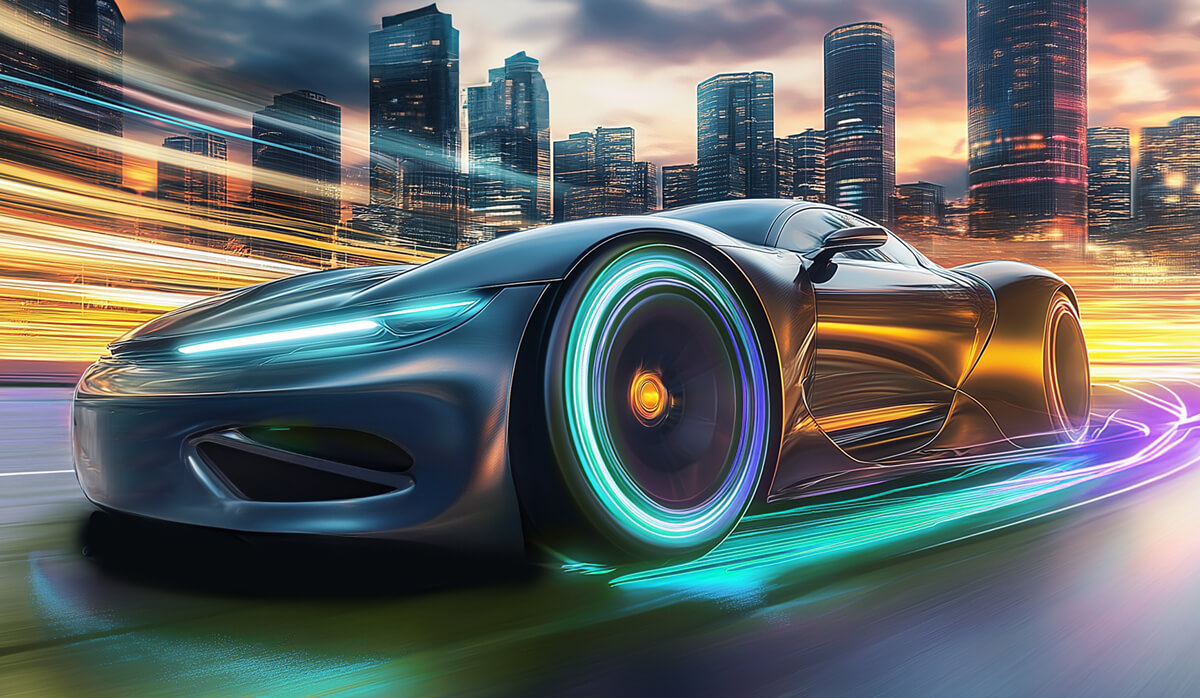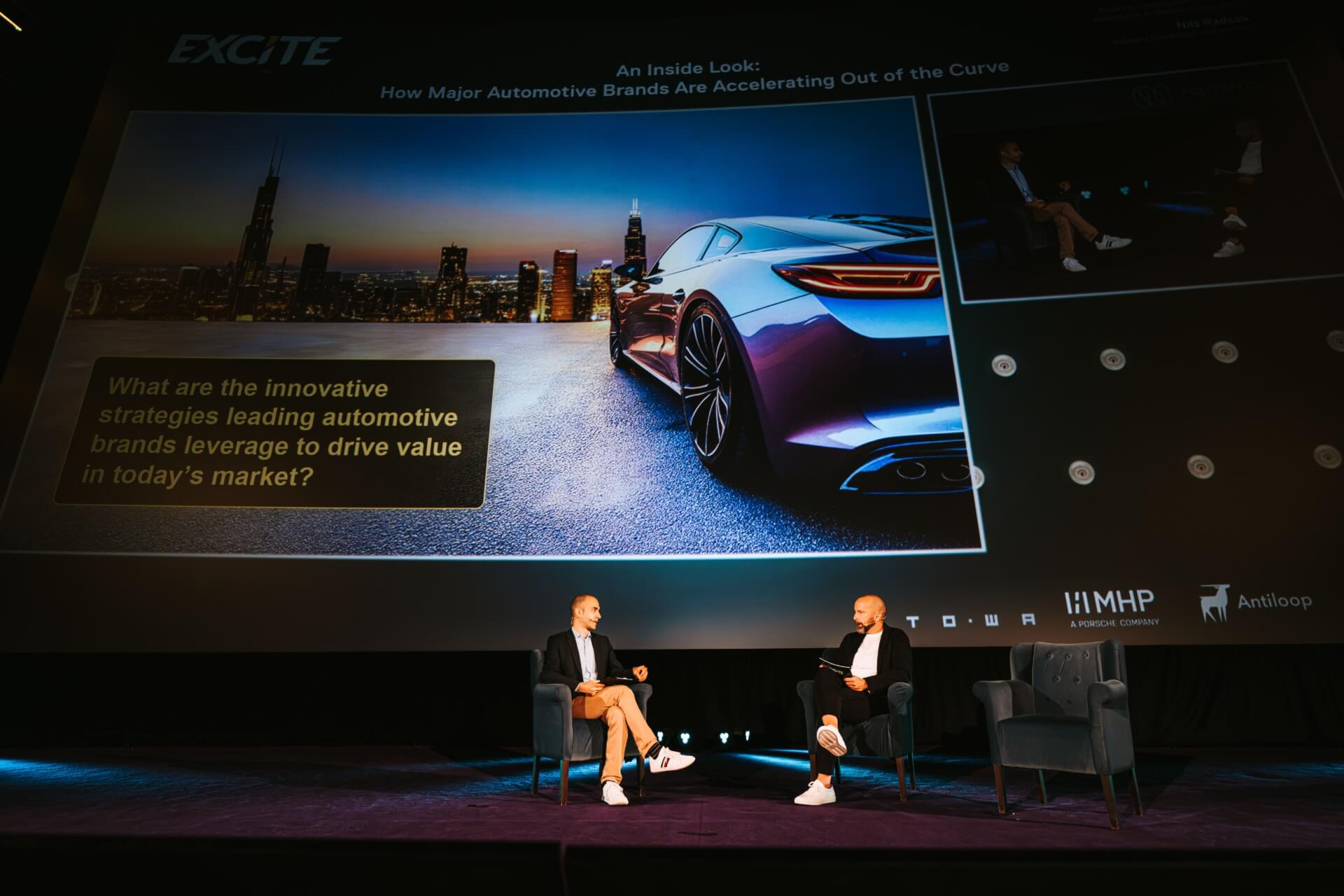Automotive
Key Learnings from Automotive Leaders on Accelerating Out of the Curve
Discover how automotive leaders are staying ahead of the competition in a rapidly evolving industry. In this blog post, industry experts share their top insights, covering aftermarket opportunities, customer experience innovations, and the role of D2C models in reshaping the future of automotive.


Electrification, software-defined vehicles, autonomous driving, and shared mobility—it’s safe to say that the automotive industry is undergoing a period of unprecedented change, driven by a convergence of transformative trends that are reshaping the landscape of automotive manufacturing.
To stay competitive, automotive experts agree that OEMs (Original Equipment Manufacturers) and other industry players must adopt strategies that leverage digital technologies to deliver value and efficiency across the entire value chain. From accelerating time to market with cloud-based solutions to creating more personalized customer experiences through online platforms, the shift toward digital-first strategies is not only revolutionizing how vehicles are built and sold but also how brands build relationships with their customers.
Onstage at Spryker’s EXCITE 2024, AWS’s Mauro De Micheli and Industry Advisory Nils Radsak explored how these trends are reshaping the automotive sector. Here are their top takeaways:

Aftermarket sales as a key opportunity
The total number of cars worldwide is expected to reach two billion by 2040. With more cars on the road and vehicles staying in use longer, the potential for aftermarket services has emerged as a crucial opportunity for brands to drive long-term value. As Mauro De Micheli suggests, this vast and expanding market for parts, services, and upgrades often yields higher profit margins than initial car sales.
"Aftermarket is actually a very interesting segment because it's an area where brand counts. And it’s an area also where margins are normally higher, in the double digits. Therefore, it shouldn't come as a surprise that OEMs, even tier-one suppliers, are focusing on this."
De Micheli highlights the growing importance of this segment, noting that connected vehicles are expected to shape aftermarket services. 95% of new cars are projected to be connected by 2030, creating new opportunities for remote diagnostics, over-the-air (OTA) updates, and smarter management of spare parts and services.
He shares that brands like Stellantis are already innovating in this area by developing comprehensive aftermarket strategies, including their Distrigo distribution network and the EuroRepair service platform. These initiatives not only service their own vehicles but extend to other manufacturers, positioning them to capture a larger share of the aftermarket.
As 71% of consumers would increase their annual spend on aftersales if the experience improved, automotive companies must capitalize on the aftermarket, particularly as the industry shifts toward electrification and digital connectivity. This will be a crucial part of building lasting relationships with customers and ensuring the brand remains relevant throughout a vehicle’s lifecycle.
Online marketplaces are revolutionizing the customer experience
These days, automotive customers are looking for a buying experience similar to those found in other consumer categories. But, as De Micheli points out, traditional car buying is often fragmented and cumbersome. In fact, only 52% of global customers are completely satisfied with their current automotive customer journey.
This disconnect is making way for online marketplaces to transform how brands engage with consumers by offering a unified experience where customers explore, customize, and purchase vehicles with the same ease they expect in other retail sectors.
These online marketplaces are more than just sales platforms. They create what Radsak calls “transactional ecosystems” where manufacturers, dealers, and third-party service providers can collaborate and improve the overall customer experience by better anticipating customer needs, enhancing personalization, and building stronger, more direct relationships with buyers. This benefits not just the operator, but all participants, allowing the sharing of data and value across the entire automotive value chain.
"It benefits your ability to create data streams that improve your decision-making. You can have better operational planning in terms of sales and after-sales, regionalization, and pricing. You can improve customer satisfaction or customer experience, and it helps with up and cross-sells."
D2C and the role of dealers
The direct-to-consumer model is growing in relevance across industries, and automotive is no different. While manufacturers attempt to sell vehicles directly to customers, bypassing traditional dealerships, the automotive sector faces unique challenges that make the full adoption of this model more complex.
As Nils Radsak notes, the agency model—where manufacturers still involve dealers but offer a more direct relationship with customers—is currently more prevalent than a pure D2C approach.
"At the end of the day, what they try to do with the D2C is they go from manufacturer directly to the consumer. That is not happening in a lot of cases. We call that a false agency model. It is actually that the retailer or the dealer is included in that journey and receives a commission. So a real dealer is obsolete, and really D2C is happening—it's just not really visible."
In this false agency model, dealers are still involved in the process, often receiving commissions on vehicle sales. This approach allows OEMs to maintain control over the brand experience while leveraging the existing dealer network for physical touchpoints like test drives and trade-ins. However, it raises questions about the long-term role of dealerships in an increasingly digital landscape.
The move to D2C also introduces new risks and challenges for manufacturers. As Nils points out, traditional dealers help manage the financial and inventory risk, which many OEMs may not be fully prepared to take on themselves.
Despite these challenges, experts agree that phygital—a blend of physical and digital—experiences remain critical for customer satisfaction.
What trends are coming next?
According to De Micheli and Radsak, these are the upcoming trends for automotive companies to keep an eye on over the next few years:
- Increased adoption of edge technologies and computing. As vehicles become more autonomous, the need for real-time processing of data from sensors, cameras, and other inputs will grow.
- Proliferation of 5G and advanced connectivity. The rollout of 5G networks is transforming connectivity by providing ultra-low latency and high bandwidth, essential for real-time applications.
- Convergence of Gen AI, AI & ML within platform architectures. AI-driven platforms will enhance the ability of vehicles to learn from user behavior, adapt to different driving conditions, and optimize performance over time. This will accelerate the development of self-learning systems, predictive analytics, and personalized services, making vehicles smarter and more responsive to both drivers and passengers.
- Expansion of blockchain technology. Blockchain technology is being explored for decentralized platforms that enhance transparency, security, and trust in transactions.
Looking for a blueprint for capturing more revenue and accelerating out of the curve? Learn more about how to transform your automotive brand with Spryker’s unified commerce solutions that prioritize customer lifetime value, embrace industry innovation, and harness the power of AI and connected machines.